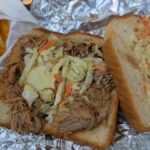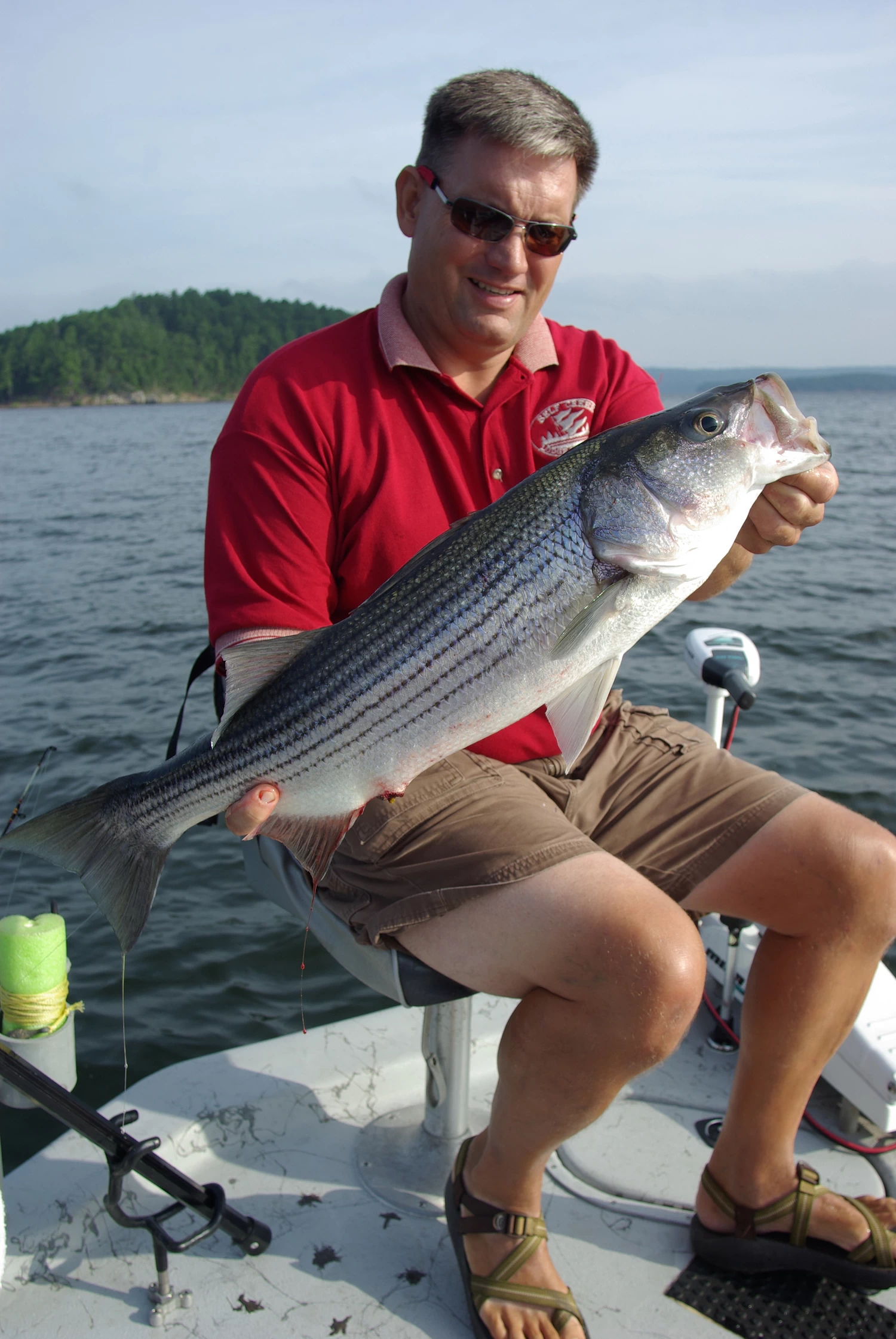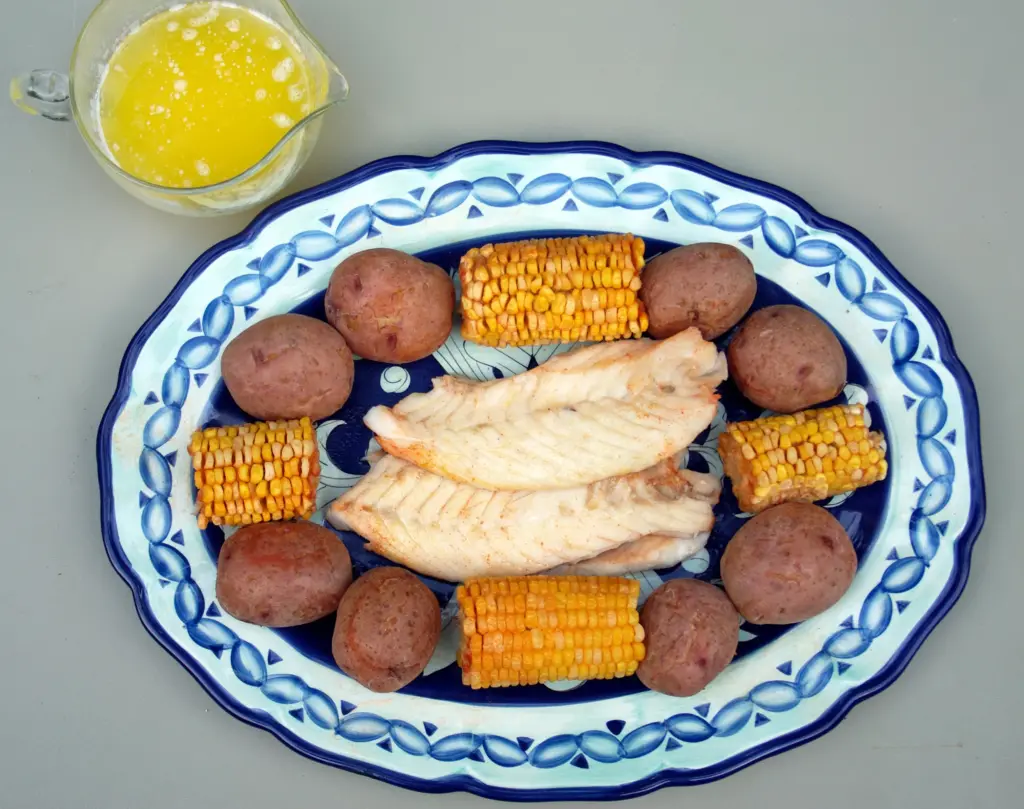

Several years ago, on a hot summer day, my sons and I fished for striped bass with guide Jerry Blake on Lake Greeson in southwest Arkansas. We quickly caught our limits of these powerful linesides, most weighing around 10 pounds.
“Fishing for stripers is really fun,” Jerry said as we headed back with a full cooler of fish. “But the best part of a striper trip with me is eating your catch, prepared fresh at the dock. The way I cook it, it tastes just like crabmeat.”
Blake started by mixing Louisiana Crawfish, Crab & Shrimp Boil spices into a large pot of water and bringing it to a boil. He added corn on the cob and new red potatoes, cooking them until tender. After turning off the heat, he dropped in small pieces of the well-trimmed fish, letting them steep in the hot water for 20 minutes until they flaked easily with a fork.
“Here you go,” Jerry said, handing each of us a small bowl of hot melted butter. “Dip your fish in that, and you’ll have a great meal that tastes even better than real crab.”
He was right. That striper was as good as any fish I’ve ever eaten, and “striper crabmeat” became a favorite in the Sutton household.
If you think striped bass aren’t good to eat, think again. Try this recipe, and you’ll discover just how scrumptious these fish can be.
One-Pot Striper Boil

Ingredients:
5 pounds striped bass fillets, cut into pieces
1 (16-oz.) package Louisiana Crawfish, Crab & Shrimp Boil
Water
2 pounds new potatoes
5 pieces corn on the cob, broken in half
Directions:
In a large stockpot, prepare the Crawfish, Crab & Shrimp Boil according to package directions. Bring the seasoned water to a rolling boil, then add the new potatoes. Boil for 5 minutes, then add the corn. Boil for an additional 15 minutes.
Turn off the heat, and add the striper pieces. Cover the pot and let it stand for 20 to 30 minutes. Use a large slotted spoon to transfer the fish and vegetables to plates. Serve with hot melted butter or cocktail sauce on the side. Serves 10-12.
If you’re cooking for a large crowd, you can make multiple batches using the same water.

Keith “Catfish” Sutton of Alexander, Arkansas, is one of the country’s best-known outdoor
journalists. His stories and photographs about fishing, hunting, wildlife and conservation have
been read by millions in hundreds of books, magazines, newspapers and websites. He and his
wife Theresa own C&C Outdoor Productions Inc., an Arkansas-based writing, photography,
lecturing and editorial service.




Get DownHome Arkansas blog posts, news, and more directly by email. Give us your name and email if you’d like to subscribe.